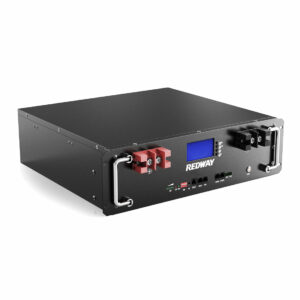What is a power rack used for?
Power racks are heavy-duty gym structures designed for safe weightlifting, particularly for squats, bench presses, and overhead lifts. They feature adjustable safety bars to catch weights if a lifter fails, pull-up bars, and J-hooks for barbell support. Built from steel, they withstand loads exceeding 1,000 lbs, making them essential for strength training, injury prevention, and solo workouts.
What defines a power rack’s core functionality?
A power rack provides a safe lifting environment through adjustable safety bars, J-hooks, and pull-up bars. It enables compound lifts like squats without spotters, with steel crossmembers ensuring structural integrity under extreme loads (1,200+ lbs)

Beyond basic functionality, power racks integrate modular attachments—landmine posts, dip bars, or cable pulleys—for exercise variety. The safety bars are typically spaced at 2-inch intervals, allowing precise height adjustments. Pro Tip: Always test safety bar alignment with your barbell path before heavy lifts. For example, a 2024 Rogue Monster rack supports 1,500 lbs and includes laser-cut numbering for quick setup. But what if space is limited? Compact models like the Titan T-2 (82” height) fit low-ceiling home gyms while maintaining 800 lb capacity.
How do power racks differ from squat stands?
Power racks offer full enclosure with four vertical posts, while squat stands are open-fronted and less stable. Racks provide superior safety for solo lifters, whereas stands prioritize space efficiency and portability.
Power racks use 11-gauge steel (3-5mm thick) versus squat stands’ 14-gauge (2mm), giving them 2-3x higher load tolerance. The enclosed design allows attachment of accessory arms for resistance band training or belt squats. Practically speaking, racks like Rep PR-5000 support multi-user commercial gym demands, while stands suit minimalist setups. Warning: Never attempt max-effort lifts in squat stands without spotter arms—a tipped barbell could cause catastrophic failure.
| Feature | Power Rack | Squat Stand |
|---|---|---|
| Safety | Full cage + spotter arms | Open front |
| Weight Capacity | 1,000–1,500 lbs | 500–800 lbs |
| Footprint | ≥48”x48” | ≥24”x36” |
What exercises can you perform in a power rack?
Power racks enable squats, bench presses, overhead presses, and pull-ups. Safety bars allow failed lift recovery, while accessory mounts add exercises like landmine rows or band-resisted deadlifts.
Advanced users exploit pin positions for rack pulls (partial deadlifts) or incline bench variations. The vertical posts often have Westside spacing (1-inch hole increments) for micro-adjustments. For example, setting safety bars 12” apart lets you perform heavy pin presses safely. Pro Tip: Use the pull-up bar for weighted belt exercises—attach chains for progressive overload. Ever tried belt squats? Loop a barbell through the rack’s base and attach a dip belt for quad-focused, spine-neutral training.
Why are safety mechanisms critical in power racks?
Adjustable safety bars prevent crushed chests or dropped barbells during failed reps. Commercial-grade racks include dual uprights and redundant welding to handle repeated impact forces from 500+ lb drops.
Modern designs feature quick-adjust lever arms (e.g., Eleiko XF) that reposition in seconds versus manual pin-and-pipe systems. Testing shows 3/8” thick safety bars deform less than 0.1” under 800 lb static loads. But what about bench press safety? Set bars 1-2” below your sternum touchpoint—too high restricts range of motion; too low risks bar impact. Case in point: Powerlifters like Ed Coan credit racks’ safety features for enabling maximal effort without spotters.
| Safety Feature | Entry-Level | Pro-Grade |
|---|---|---|
| Bar Thickness | 2” diameter | 3” diameter |
| Adjustment System | Manual pins | Lever arms |
| Impact Rating | 500 lbs | 1,200 lbs |
How to choose the right power rack?
Prioritize steel gauge (11-12 gauge ideal), hole spacing (1-2” for fine adjustments), and footprint (bolt-down vs freestanding). Commercial units need 3×3” 11-gauge steel, while home racks use 2×2” 14-gauge.
When considering space, measure ceiling height—racks over 90” may not fit standard rooms. Look for dual pull-up bar orientations (neutral vs pronated grips) and compatible accessories. For example, the Bells of Steel Hydra rack offers 1” UHMW-lined J-hooks to protect barbell knurling. Pro Tip: Opt for racks with Westside spacing if you compete in powerlifting—it mimics meet rack heights. Budget-conscious? Rep Fitness PR-1100 provides 1,000 lb capacity under $500, though with 2” hole spacing.
RackBattery Expert Insight
FAQs
Can power racks be used in home gyms?
Yes, but measure ceiling height first—compact racks (80-84” tall) fit 8’ ceilings. Bolt-down models prevent tipping in carpeted areas.
How much weight can power rack J-hooks hold?
Commercial J-hooks support 1,000+ lbs. Check weld quality—poorly fused hooks bend under 500 lb loads, risking barbell slippage.



